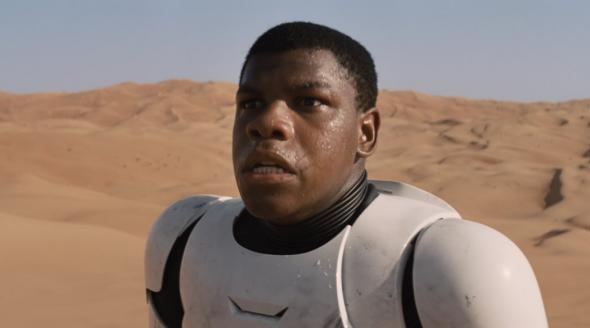The Force Awakens isn’t nearly as referential as the original Star Wars—what is? But as J.J. Abrams himself has acknowledged, somewhat cryptically, it does sneak in a few, more subtle nods to movie history (in addition to the many, many Star Wars callbacks). For example, many fans have already noted the similarities between the First Order’s rallies and the Nazi rallies depicted in Leni Riefenstahl’s The Triumph of the Will (a movie that George Lucas seemed to borrow from, somewhat awkwardly, for the ending of the original Star Wars):
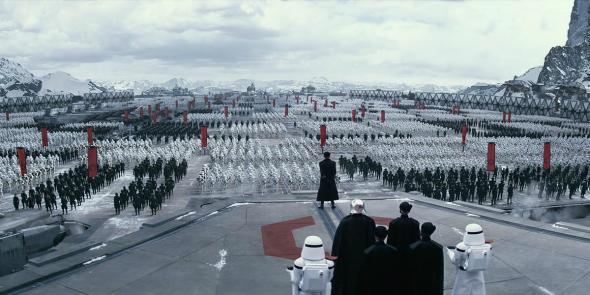
Still from the trailer
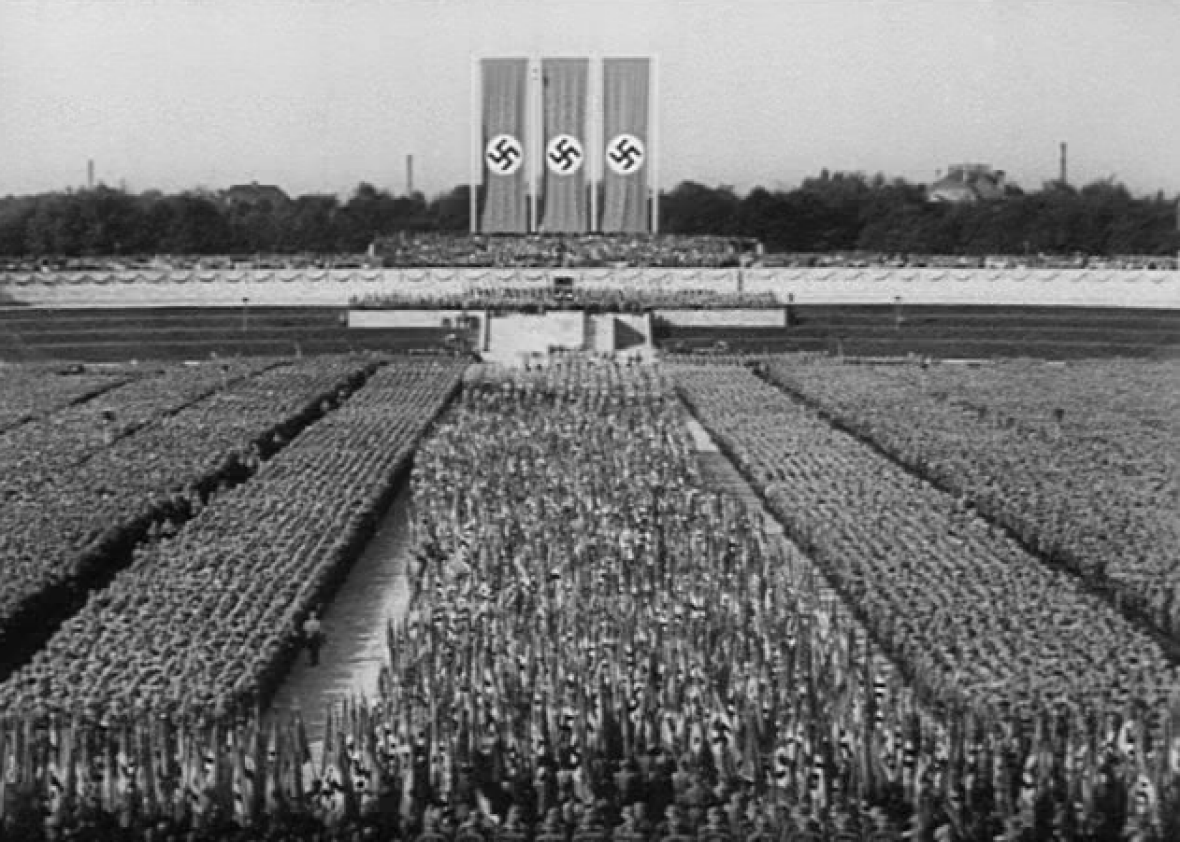
Still from Triumph of the Will
While others have noted the similarities between the shot of the TIE fighters shown in the trailer and similar shots in Apocalypse Now (which Lucas helped develop) and at the end of THX 1138 (Lucas’ first feature):
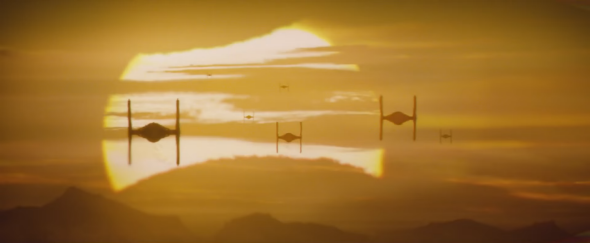
Still from the trailer
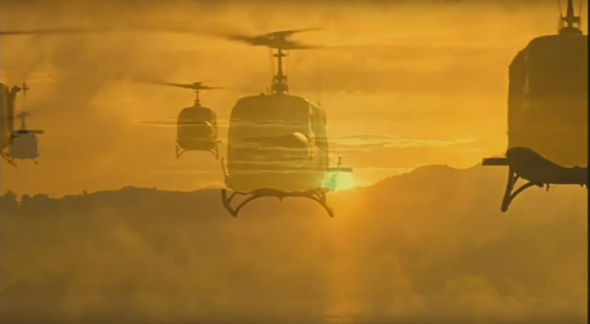
Still from Apocalypse Now © United Artists
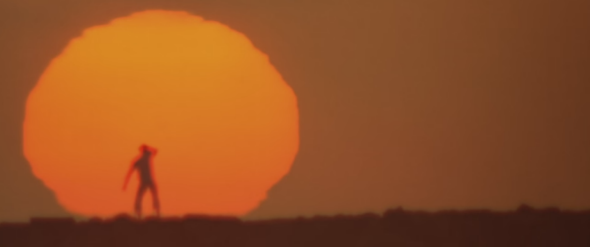
Still from THX 1138 © Warner Bros.
These two moments both appeared in the movie’s trailer, but there’s more in the movie itself. At one point, for example, the camera faces Harrison Ford as he runs from a giant rolling ball (I won’t spoil what it is, but it’s not a boulder) that’s chasing him down a tunnel, in what seems to be an echo of Raiders of the Lost Ark.
But no one seems to have yet pointed out the most surprising allusion in the movie, which comes right at the beginning, and which can be discussed without spoiling anything that wasn’t shown in the trailers. When we first meet Finn (John Boyega), he’s an anonymous stormtrooper, and he explains that he was never given a proper name—just the designation FN-2187.
I could write 4,500 words on the significance of those four numbers to George Lucas and the creation of Star Wars (in fact, here they are), but here’s the Sparknotes version. Back when Lucas was an arthouse-loving padawan, he had his mind blown by Arthur Lipsett’s 21-87. A meditation on man and technology cut together from out-of-context news clips and repurposed snippets of dialogue, it turned Lucas into what he called “an editing freak.” “When George saw 21-87, a lightbulb went off,” classmate and longtime Lucas collaborator Walter Murch later recalled. The movie showed Lucas that you could cut together old movies to make something fresh—just as he later did with Star Wars.
21-87 also helped spark another idea for Star Wars: In one of those out-of-context conversations, a man argues that, behind everything, there is a God-like, hidden “force.”
The movie had such a profound influence on Lucas that he began to include its title in everything he did. His first major short, THX 1138 4EB, takes place in the year 2187, and the feature version of THX 1138 centers around the futuristic date “21/87.” In the original Star Wars, Leia is held in Cell 2187. The Force Awakens might borrow more from other Star Wars movies than from the variety of Westerns, samurai movies, Flash Gordon serials, and dogfighting thrillers that Lucas borrowed from, but it still pays due respect to the short that arguably started it all.
